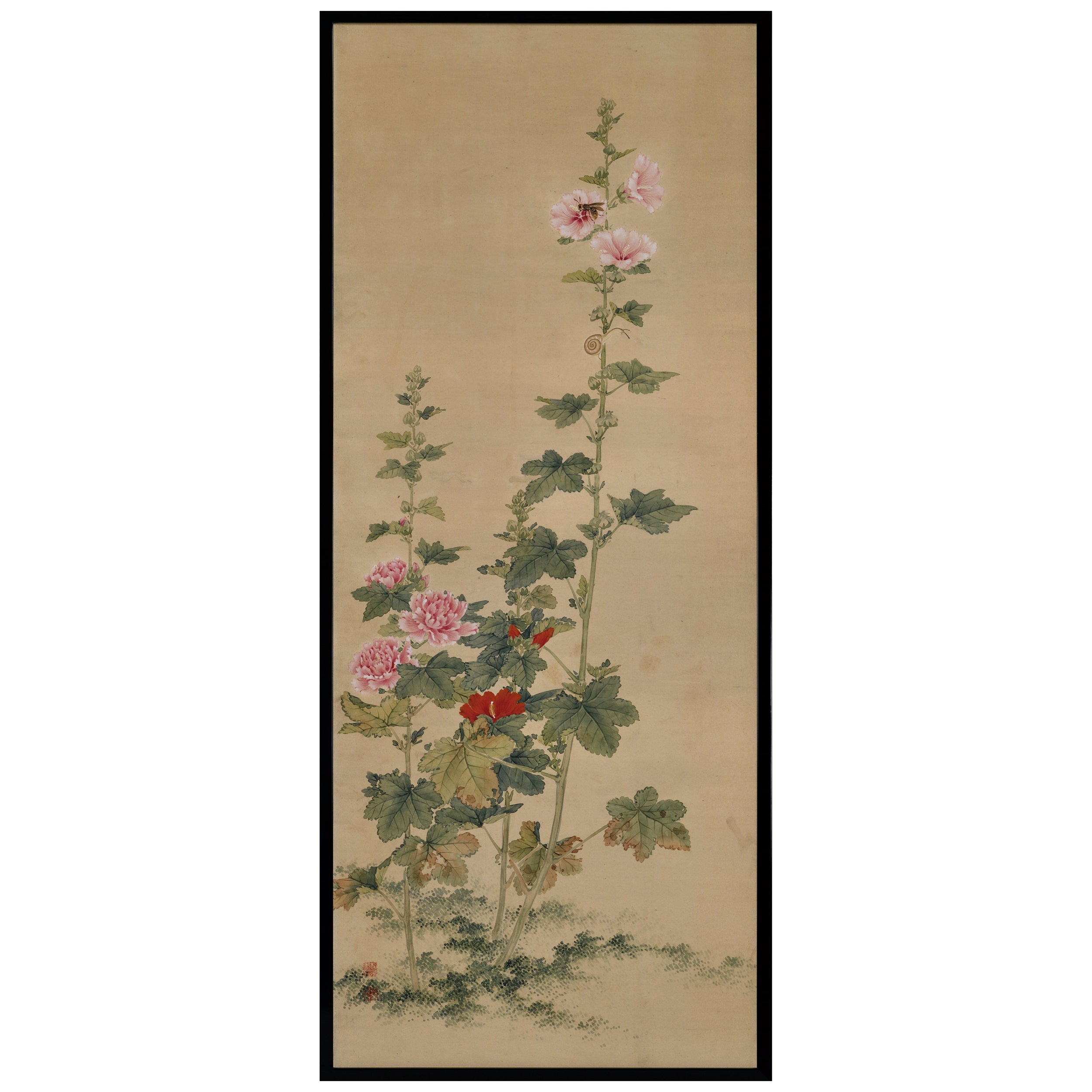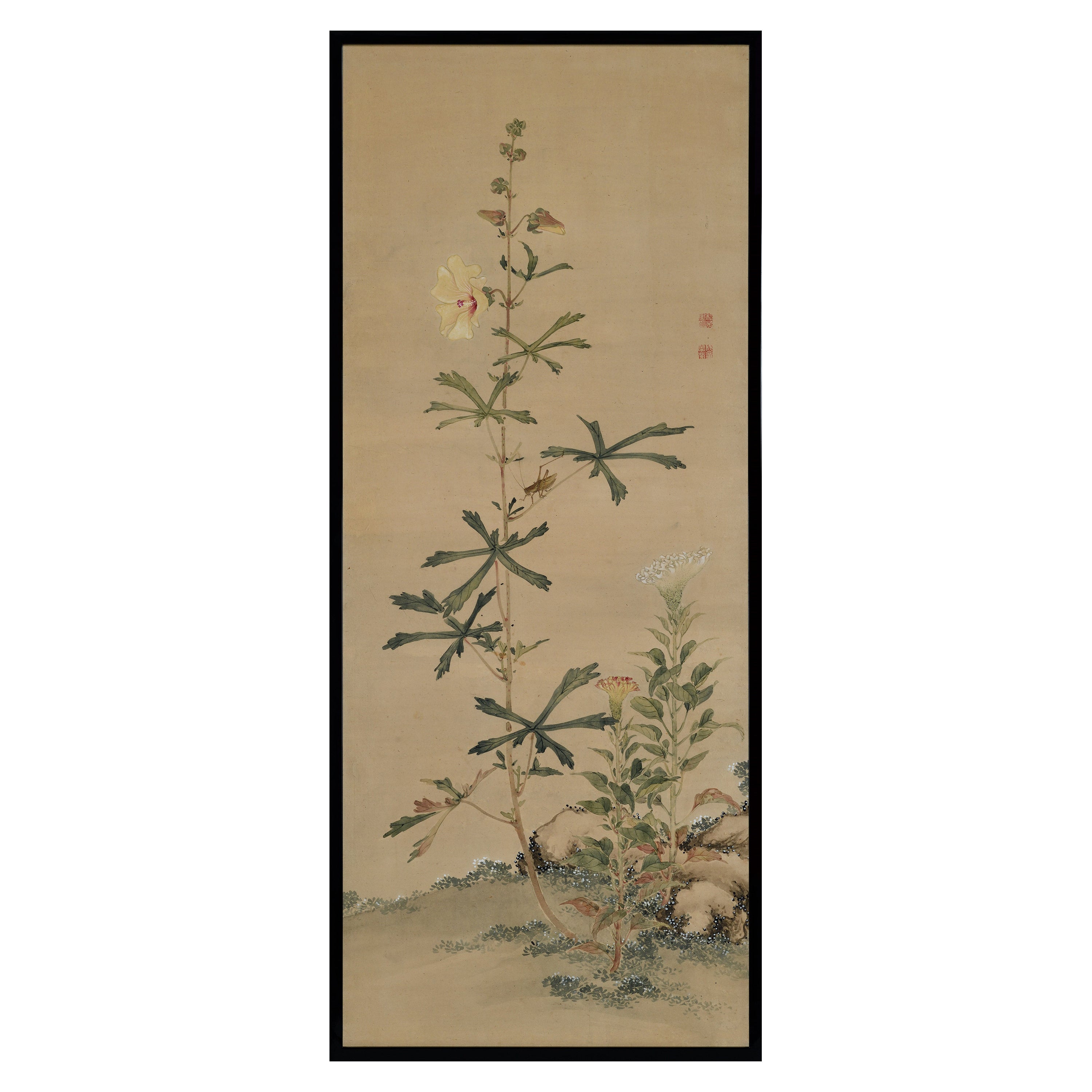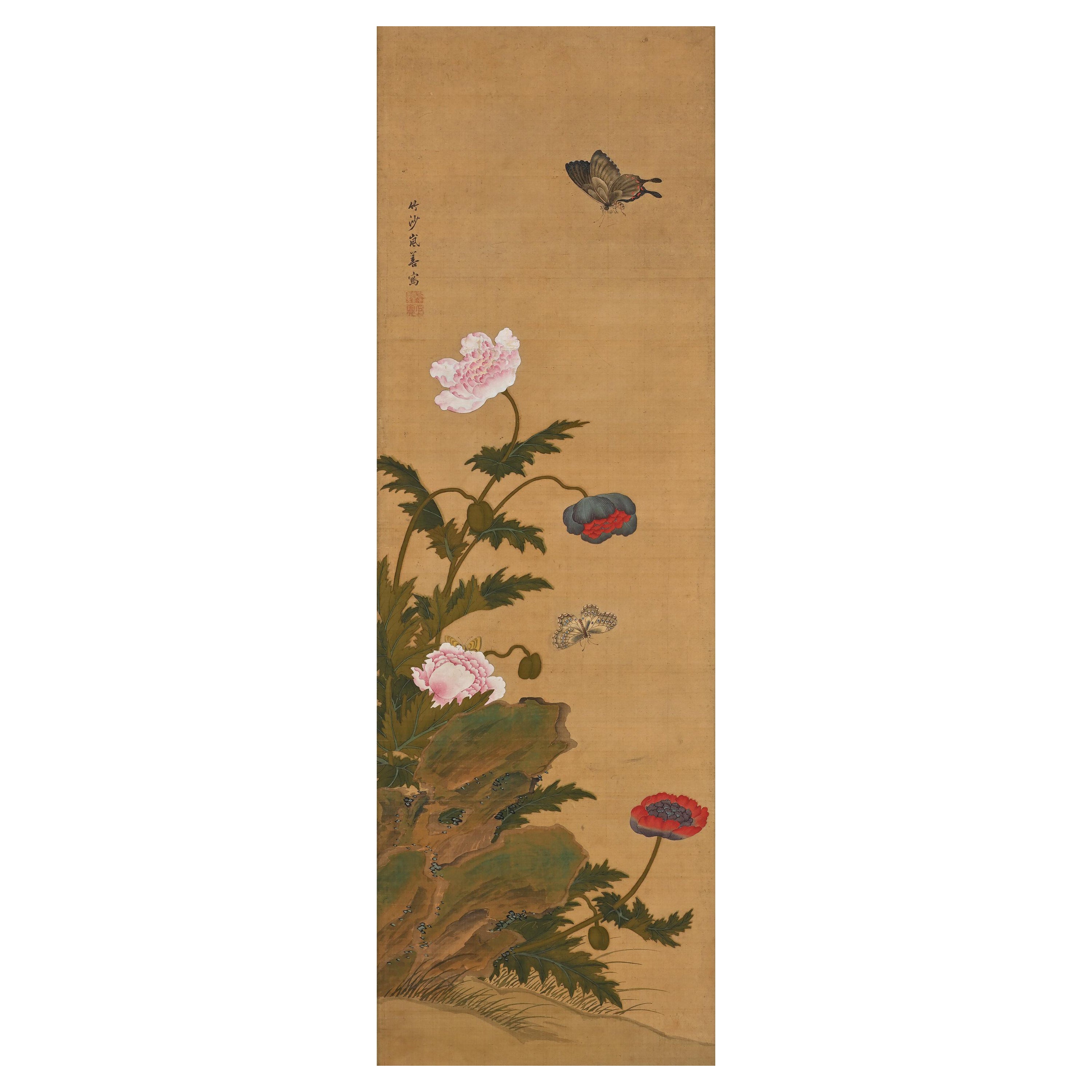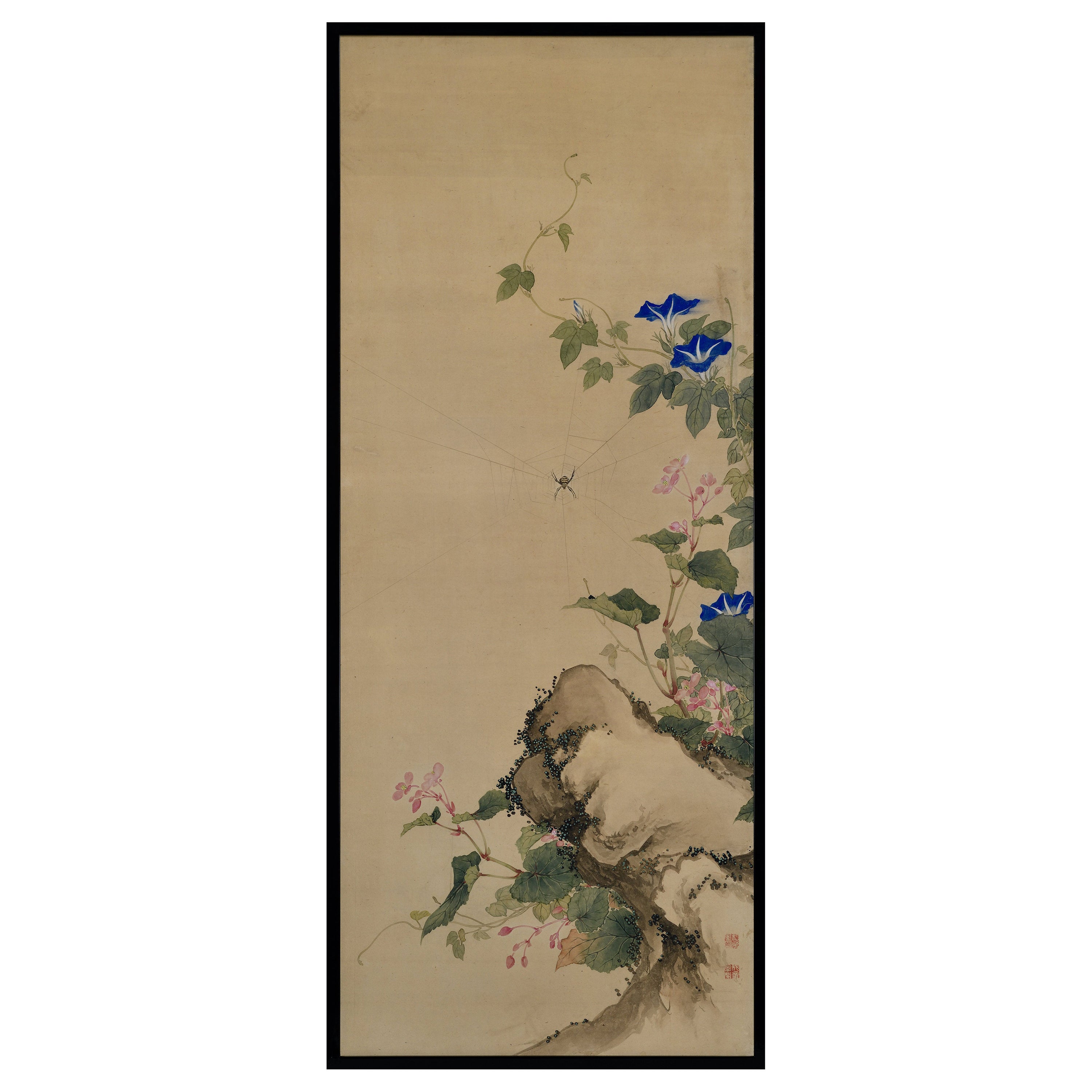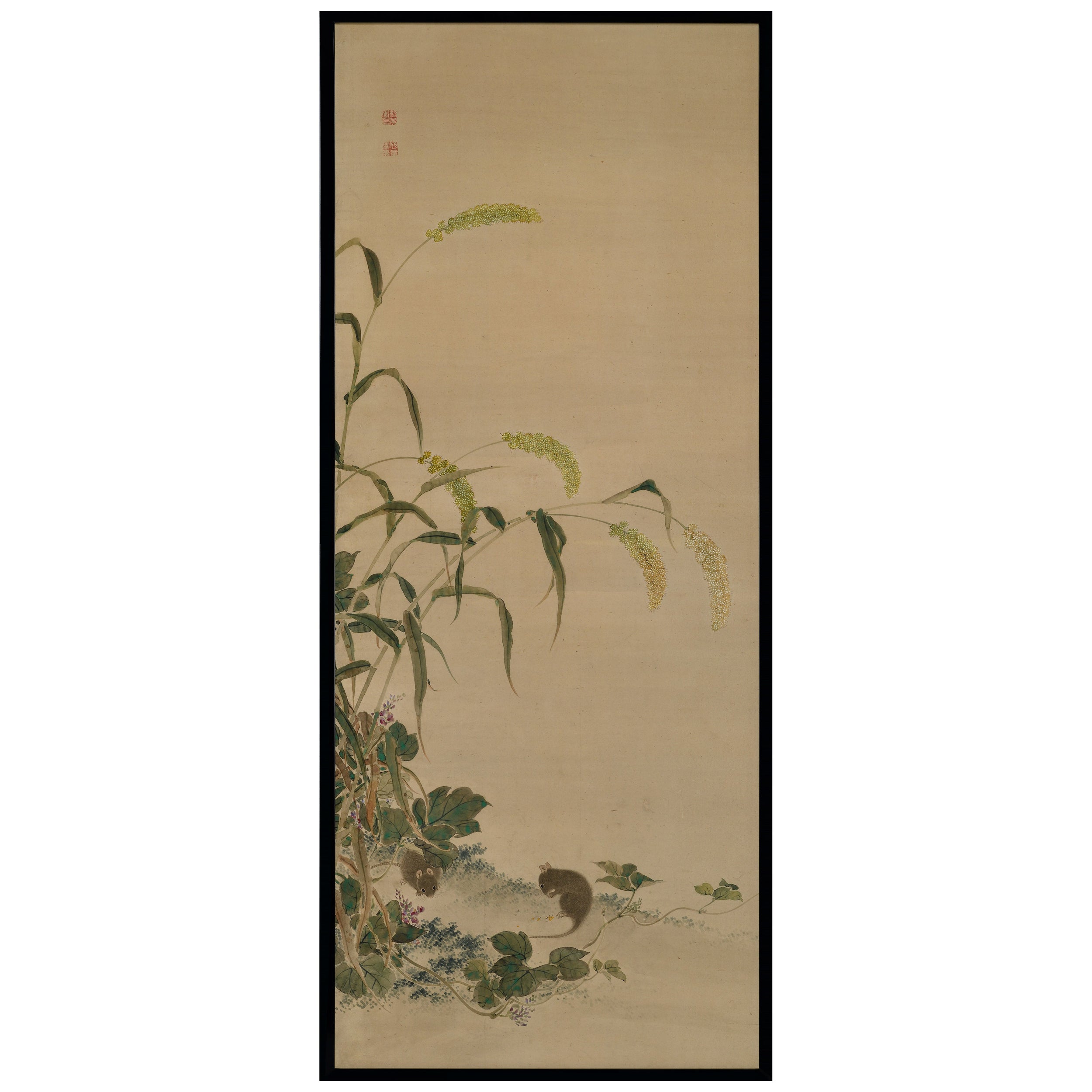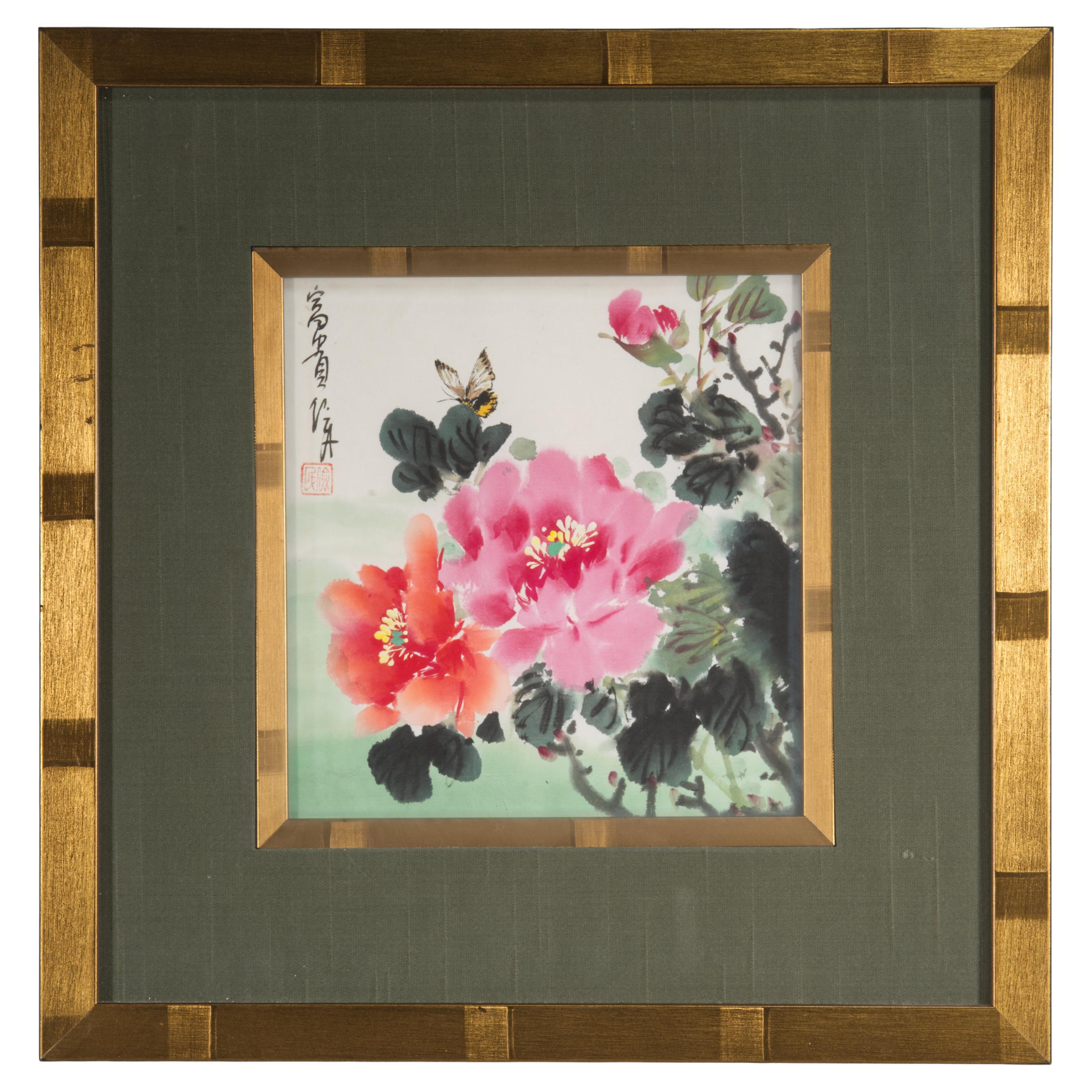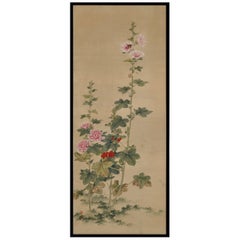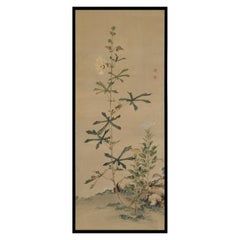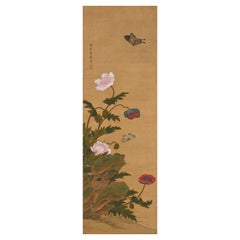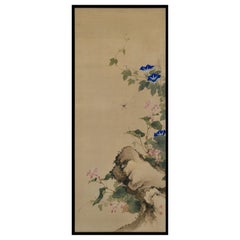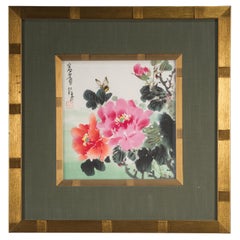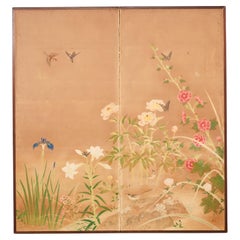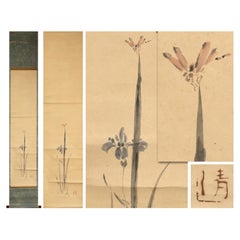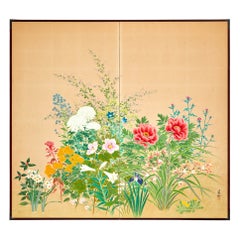Items Similar to Mid 19th Century Framed Japanese Painting. Longhorn Beetle & Poppies.
Want more images or videos?
Request additional images or videos from the seller
1 of 7
Mid 19th Century Framed Japanese Painting. Longhorn Beetle & Poppies.
$4,800
£3,628.21
€4,169.45
CA$6,683.97
A$7,435.64
CHF 3,897.86
MX$90,861.75
NOK 49,634.35
SEK 46,723.87
DKK 31,123.38
Shipping
Retrieving quote...The 1stDibs Promise:
Authenticity Guarantee,
Money-Back Guarantee,
24-Hour Cancellation
About the Item
Obata Tosho (1812-1886)
Longhorn Beetle & Poppies.
Late Edo period, mid 19th Century
Framed Japanese Painting. Ink and color on paper.
Individually framed 19th century bird and flower paintings by the Tottori feudal painter Obata Tosho. Each painting is meticulously and realistically depicted with delicate brushwork and subtle yet gorgeous coloring. The flora has been entirely rendered in the ‘boneless’ technique of applying ink or pigment directly to the paper in a manner that emphasizes washes instead of lines. The representation of the insects and mice are detailed almost to the point of scientific exactness. The flora and fauna represented are associated with the four seasons and the twelve months and convey a sense of time passing and celebration of the unique characteristics of the season.
The paintings show the distinct influence of Nakabayashi Chikuto, Obata Tosho’s second teacher. Chikuto was a leading painter and theorist within a circle of mid-19th century Japanese scholars who were intensely interested in Chinese literati ideals. Chikuto specialized in Chinese-style landscape painting, but he also produced a number of bird and flower works that were likely inspired by the careful and delicate approach of the Chinese master Yun Shou-ping (1633-1690).
Obata Tosho (1812-1886) was born in Tottori prefecture. He first learned Nanpin style painting techniques from Kuroda Toko, and his talent was recognized from a young age. He is an important member of the Tottori School. During the construction of the new Ninomaru building of Tottori Castle in 1845 he contributed a number of paintings and folding screens. In 1846 he went to Kyoto to study painting under the literati painter Nakabayashi Chikuto. He was simultaneously employed as an artist for the Tottori domain. He worked there for over 20 years during the turbulent period from the Edo to the Meiji era, and became, along with Oki Morikata (1841-1912), the last official artist of the Tottori domain. The 45 sliding door paintings that decorate the entire main hall of Jitoku-ji Temple (Hyogo Prefecture) are said to be Tosho’s masterpiece, and feature vivid depictions of a variety of subjects such as "Playing Carp," "Dragon and Clouds," "Fierce Tiger," "Reeds and Geese," and "Peony and Peacock."
- Dimensions:Height: 51.5 in (130.81 cm)Width: 21.5 in (54.61 cm)Depth: 0.75 in (1.91 cm)
- Style:Edo (Of the Period)
- Materials and Techniques:
- Place of Origin:
- Period:
- Date of Manufacture:Circa 1850
- Condition:Refinished. Wear consistent with age and use. Recently restored and framed in Kyoto by traditional craftsmen.
- Seller Location:Kyoto, JP
- Reference Number:1stDibs: LU2472341454212
About the Seller
5.0
Recognized Seller
These prestigious sellers are industry leaders and represent the highest echelon for item quality and design.
Established in 2001
1stDibs seller since 2016
70 sales on 1stDibs
Typical response time: 6 hours
- ShippingRetrieving quote...Shipping from: Kyoto, Japan
- Return Policy
Authenticity Guarantee
In the unlikely event there’s an issue with an item’s authenticity, contact us within 1 year for a full refund. DetailsMoney-Back Guarantee
If your item is not as described, is damaged in transit, or does not arrive, contact us within 7 days for a full refund. Details24-Hour Cancellation
You have a 24-hour grace period in which to reconsider your purchase, with no questions asked.Vetted Professional Sellers
Our world-class sellers must adhere to strict standards for service and quality, maintaining the integrity of our listings.Price-Match Guarantee
If you find that a seller listed the same item for a lower price elsewhere, we’ll match it.Trusted Global Delivery
Our best-in-class carrier network provides specialized shipping options worldwide, including custom delivery.More From This Seller
View AllMid 19th Century Framed Japanese Painting. Snail, Wasp & Hollyhock.
Located in Kyoto, JP
Obata Tosho (1812-1886)
Snail, Wasp & Hollyhock
Late Edo period, mid 19th Century
Framed Japanese Painting. Ink and color on paper.
Individually framed 19th century bird and flow...
Category
Antique Mid-19th Century Japanese Edo Paintings and Screens
Materials
Paper
Mid 19th Century Framed Japanese Painting. Grasshopper & Hibiscus.
Located in Kyoto, JP
Obata Tosho (1812-1886)
Grasshopper & Hibiscus.
Late Edo period, mid 19th Century
Framed Japanese Painting. Ink and color on paper.
Individually framed 19th century bird and flow...
Category
Antique Mid-19th Century Japanese Edo Paintings and Screens
Materials
Paper
19th Century Japanese Scroll Painting by Igarashi Chikusa, Poppies & Butterflies
Located in Kyoto, JP
Poppies & Butterflies
Ink, pigment and gofun on silk
Igarashi Chikusa (1774-1844)
Signature: Chikusa Ran Zen
Upper Seal: Ran Shuzen
Lower Seal: Kyoho
Dimensions:
Scroll: H. 68” x W. 18” (172cm x 45cm)
Image: H. 38.5’’ x W. 12.5’’ (98cm x 32cm)
This composition shows elegant images of poppies and the butterflies that are inevitably drawn to them. It captures a momentary glimpse into a world both visually dazzling and startlingly realistic. The painting is infused with sensitivity and attention to seasonal change and weather conditions. The thin and fragile poppies are beautifully depicted with brilliant colors and the butterflies are similarly infused with life. The painting is on silk which requires extremely precise painting skills as no element once painted can be removed.
Poppies were a favorite subject of Rinpa school artists through the ages. Originally they were somewhat abstracted but by the age of Sakai Hoitsu...
Category
Antique Early 19th Century Japanese Edo Paintings and Screens
Materials
Silk
Mid 19th Century Framed Japanese Painting. Spider & Morning Glory.
Located in Kyoto, JP
Obata Tosho (1812-1886)
Spider & Morning Glory
Late Edo period, mid 19th Century
Framed Japanese Painting. Ink and color on paper.
Individually framed 19th century bird and flowe...
Category
Antique Mid-19th Century Japanese Edo Paintings and Screens
Materials
Paper
Mid 19th Century Framed Japanese Painting. Mice & Millet
Located in Kyoto, JP
Obata Tosho (1812-1886)
Mice & Millet
Late Edo period, mid 19th Century
Framed Japanese Painting. Ink and color on paper.
Individually framed 19th century bird and flower paintin...
Category
Antique Mid-19th Century Japanese Edo Paintings and Screens
Materials
Paper
Japanese Painting. Bird and Flower. 19th century copy of Lu Ji by Ogata Tomin.
Located in Kyoto, JP
Ogata Tomin (1839 -1895)
Birds in a spring landscape
Ink and colour on silk.
Inscription reads:
“Copy of Lu Ji, painted with heartfelt appreciation”
“Painted by Tomin Ogat...
Category
Antique Late 19th Century Japanese Ming Paintings and Screens
Materials
Silk
You May Also Like
Vintage Chinese Watercolor Framed Painting of Flowers & Butterfly
Located in Clifton Springs, NY
Vintage watercolor painting depicts pink and red flowers, most probably peonies, with lush green leaves, and white and yellow butterfly, sitting on one of the leaves. Bright, festiv...
Category
Mid-20th Century Chinoiserie Paintings
Materials
Paper
Japanese Showa Two Panel Screen Spring Flora and Fauna
Located in Rio Vista, CA
Spectacular Japanese Showa period two panel byobu screen featuring spring blossoms, birds, and butterflies. Beautifully detailed iris, lily, rose of sharon, wild pinks, morning glory...
Category
20th Century Japanese Showa Paintings and Screens
Materials
Wood, Paper
Flower Scene Edo Period Scroll Japan 19c Artist Kiyoshi Watanabe
Located in Amsterdam, Noord Holland
As you can see, this is an old painting by Kiyoshi Watanabe, a colored iris and a red dragonfly.
It has a simple yet calm texture, and
the appearance of a red dragonfly standing li...
Category
Antique 18th Century Japanese Edo Paintings and Screens
Materials
Silk
$1,054 Sale Price
20% Off
Japanese Two Panel Screen: Seasonal Flowers
Located in Hudson, NY
Peonies, irises, lillies, paperwhites, cockscombs, thistle and other various seasonal flowers in mineral pigmnets on mulberry paper. Oxblood lacquer trim with beautiful bronze mount...
Category
Early 20th Century Japanese Paintings and Screens
Materials
Bronze
Japanese Two-Panel Screen, Summer Flowers on Silk
Located in Hudson, NY
Rimpa painting of flowers including morning glories, hollyhocks, sweet peas, nadeshiko, and daisies. Signature and seal read: Bisui
Category
Antique Late 19th Century Japanese Meiji Paintings and Screens
Materials
Silk, Wood
Edo Period (19th) Japanese antique painting of flowers
Located in Fukuoka, JP
Japanese antique painting of flowers 19 C
Weight 3kg ( 6.6lb)
Category
Antique Mid-19th Century Japanese Edo Paintings and Screens
Materials
Silk, Paper
More Ways To Browse
Japanese Mid Century Furniture
Japanese Mid Century
Japan Hand Painted China
Used Screen Doors
Antique Poppies
Antique Beetle
19th Century Chinese School
Chinese Bird And Flowers Painting
Four Seasons Screen
Antique Chinese Painting Of Birds
Japanese Tiger
Japanese Sliding Doors
Framed Insects
Castle Doors
The Four Seasons 19th Century
Japanese Screen Kyoto
Mid Century Poppy
Antique Castle Doors
